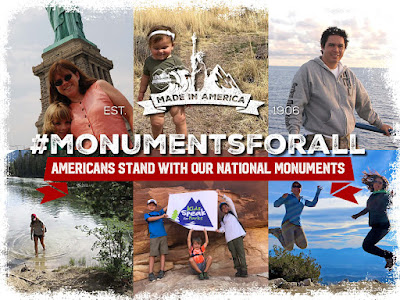This essay was published within the pages of Our National Monuments, a new book by celebrated photographer QT Luong. I co-wrote this with Gina McGuire, a Native Hawaiian scientist who serves on the community group for the Pacific Remote Islands Marine National Monument with me. Our audience for this essay is all Americans, especially those who will never visit these islands and who have probably never even heard of them, and we aim to tell them why we think these islands play an important role in the American story.
We are Native Hawaiians and Chamorros, born and raised on different islands with unique people. We are connected by our values, the Pacific Ocean, and our shared commitment to protecting and understanding our oceanic resources and cultures so we can pass them down to future generations. As stewards of Moana (the ocean), we humbly ask to share our understanding of how the significant history and natural resources of our remote Pacific Islands, places you’ve likely never heard of, are essential to the fabric of the American story.
The Pacific Remote Islands Marine National Monument is a
marine protected area comprised of five large expanses of ocean surrounding
seven mostly uninhabited American territories in the Central Pacific Ocean. The
combined area, nearly twice the size of Texas, spans over 490,000 square miles
(1.3 million sq km) and is home to some of the least disturbed coral reef and deep-sea
ecosystems left on the planet.
The seven islands have been known to Pacific Island voyagers for millennia. Wake Island, for example, is known as Eneen Kio (Island of the Kio Flower) in the native language of the Marshall Islands. In the Hawaiian language, the other names are Kalama/Moku Kua'au Ionata (Johnston Atoll), Honuaiākea (Palmyra), Nalukākala (Kingman), Puaka'ilima (Baker), Ulukou (Howland), and Paukeaho (Jarvis). These names are storied, referencing chants, native plants, and visiting ships and canoes.
While the islands were never home to permanent populations, they served as stopping points for way-finders crossing the ocean in dugout canoes. To expand its empire and resources, the United States claimed these islands in the mid-1800s, and nearly all of the islands played a critical role in World War II; one important story involves the Hui Panala'au, young Hawaiian men sent to live on the islands to secure American military claims on them. Today the islands are home to U.S. military installations and scientific outposts.
By studying the coral reefs around Palmyra Atoll, scientists have recalibrated their sense of what a healthy ocean should look like. Studies of the fish species around the island challenged our assumption of what “shark-infested” waters really mean. When left alone, free from fishing, the numbers of large apex predators – groupers, sharks, snappers, and jacks – are exponentially larger than on islands where fishing occurs. Areas like Palmyra Atoll, which remain untouched and free from fishing, provide a modern reference point for a healthy ocean habitat. These studies, and others like them, form the basis for the scientific knowledge that marine protected areas result in more diverse, healthy, and abundant populations of marine life.
We are reminded that when our ancestors landed on the islands where we live now, they must have found abundance, which today only exists on these isolated islands. For most native people, we are kin to nature. The Kumulipo, the genealogical creation story of Native Hawaiian Islanders, makes this connection literal, explaining how people are the descendants of generations of survival and adaptation of our islands' organisms. Coral is the first species within this lineage to emerge from pō, the ancestral darkness. The waters around Johnston Atoll are understood as a pelagic larval source for the French Frigate Shoals in the Northwestern Hawaiian Islands. Knowing this ecological connectivity and these foundational larval organisms in Hawaiian cosmology, we understand Johnston Atoll and the surrounding seascape as ʻohana, within the realm of familial connection.
Another way to understand these islands and their surrounding waters are as time capsules -- scientific laboratories and cultural artifacts that act as windows into the time before we fished the ocean with the help of satellites. They are a reminder of what much of the ocean used to look like and provide hope that with better management and increased protections, what we can restore the ocean for future generations.
The rugged individualism of the American character is built on the notion of the frontier and wilderness, and most Americans accept without question that our national parks protect American wild places and heritage in their many forms. Even if Americans are unable to visit them, just knowing these places exist plays a part in the American identity. For us, the monument plays a similar role for the people who call the Pacific Ocean home. We gift to America and the world this national ocean monument, and we see it as our kuleana, our duty and privilege, to be its stewards.
The great Pacific scholar Epeli Hauʻofa wrote: “There is a world of difference between viewing the Pacific as 'islands in a far sea' and as 'a sea of islands.' The Pacific Remote Islands Marine National Monument presents us with a sea of islands, as a connected, vibrant, and abundant realm with which we must steward with both haʻahaʻa (humbleness) and pride.
Angelo Villagomez & Gina McGuire
Pacific Remote Islands Marine National Monument Community Group

Comments
Post a Comment